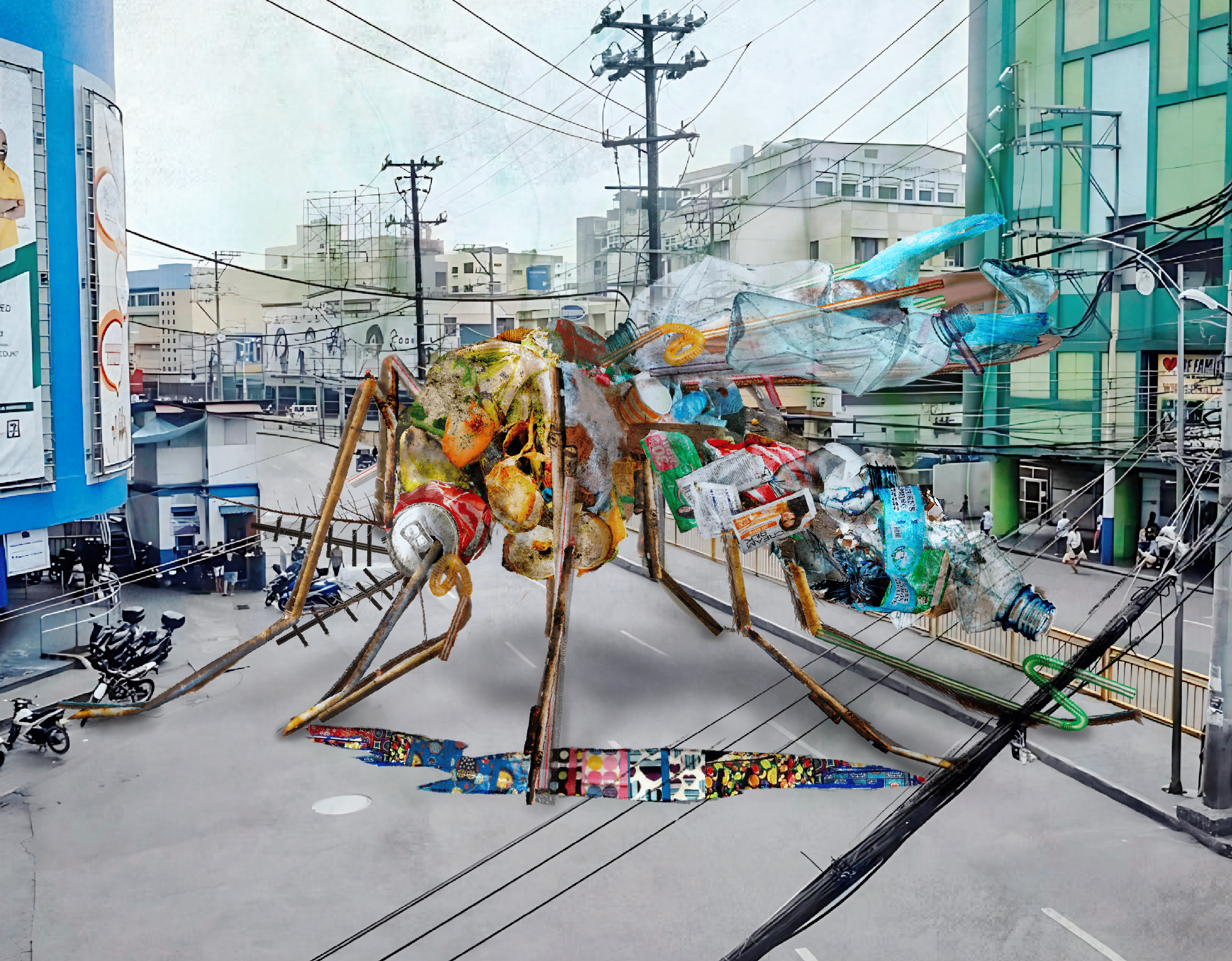It was a Monday when Divisoria underwent an overhaul.
On June 30, 2025, the streets of Manila went through a street “cleanup” immediately after Mayor Isko Moreno assumed office for his second term. Streets gleamed from soapy water as firetrucks lined up pressure-washing every pavement. Mountains of garbage piled beside roads were hauled away by trucks, and before the day came to an end, the maze of pop-up stalls was gone.
Once the “cleanup” ended, the difference was undeniable. Pedestrians walk freely without navigating through vendor stalls or fearing for their safety. For commuters, what used to be a grueling hour-long trip along Recto Avenue was cut in half. But beyond the supposed miracle, vendors had to contend with the usual marginalization from the same punitive policy.
“Ayan lang ‘yung hanapbuhay namin, tapos gaganunin lang kami,” Nanay Lulu, not her real name, said.
Such intense road-clearing operations represent Isko’s rehashed policy since his first term in 2019. Beneath this cycle of eviction lies a deeper struggle, as sanitized disenfranchisement prevents the creation of an inclusive urban policy that sustainably supports dignified livelihood.
A Sanitized City
The streets of Ilaya and Tabora are a second home for ambulant and stationary vendors alike who start laying out tarps and umbrellas before the sun even rises.
Fifty-five-year-old Rosalina Tapalya and her family have roamed the crowded arteries of Divisoria for 20 years, selling various wares like sako bags. Relying solely on hawking, she braves the tumultuous weather of the city, finding shelter on sidewalks from heat and rain.
“Lako-lako lang ako. Kapag napagod, upo. Wala naman kasi tayong pwesto,” said Rosalina.
Her P500 daily income barely suffices to meet her family’s needs. P200 is allocated for the allowance of her commuting Grade 12 daughter, P200 for rice and food of the family, and the remaining P100 for their breakfast and fare to Divisoria from their home in Baseco.
Stationary vendors also earn meagerly in Divisoria. Nanay Lulu’s once-booming family business, selling stainless wares and household merchandise for 50 years, slowly devolved into a humble makeshift stall on the corner of Tabora Street.
Insufficient capital contributes to these vendors’ low earnings. Lulu pays a loan shark P100 per day and another P100 to a storage unit in a nearby establishment. Meanwhile, Rosalina sources goods for resale from a private individual, living off crumbs from low daily sales of only two to five sako bags and the high cost of her supplies.
Varying stall and space rental fees also contribute to scant income. Some vendors follow the “etneb-etneb” system, paying P20 to the LGU once in the morning and another during the evening, totaling around P1,200 monthly. Those granted stalls in Ilaya also pay P40 a day to the LGU. Others pay as much as P300 daily to sell in front of establishments.
Such miseries from low pay compound as vendors–registered ones and ambulant alike—also fear clearing operations. During the height of “cleanups,” Rosalina sprinted through Divisoria’s inner streets to evade arrest, while Nanay Lulu carefully kept her wares behind yellow lines to avoid confiscation. David, not his real name and a vendor of 10 years, recalled countless cases of street food vendors being extorted just to keep their carts.
While vendors recognize the need for a well-managed city, the clean-ups have stirred anger, fear over lost income, and distrust toward authorities, especially when a single day without sales could mean going hungry.
“Ito na ‘yung nakagisnang hanapbuhay sa pamilya namin, mula noon hanggang ngayon. Dito lang talaga namin kinukuha ‘yung pang araw-araw,” David added.
Stained Policies
The LGU’s reliance on clearing operations to solve the space issue is business as usual, merely reframed across the past administrations.
For instance, Moreno’s first-term Executive Order 43 launched clean-up drives across all 896 barangays to decongest the city, while Lacuna’s Executive Order 15, or “No Parking, No Vending Policy” targeted 18 major roads with the same goal. The common thread is the sidelining of vendors in urban design.
As much as vendors want to be off-street, they have no choice but to continue due to a lack of support from the LGU. “Wala naman po ako natanggap, kung meron lang po, bakit hindi ako pipila? Kung meron lang talaga, ilalaan ko ang sarili ko,” Rosalina said.
Like these vendors, those without formal means of livelihood form the country’s lifeblood. Out of all employed, 42% are in the informal sector. Not only are they vital channels for goods and services to poor households, but they have also kept inflation potentially low and stable, an analyst from the Philippine Institute for Development Studies found in 2020.
The mayor now promises a 10-year plan, which vendors have yet to witness. In Moreno’s previous State of the City Address, he highlighted his “Street Smart Governance” approach, centering street governance as the foundation of true city reform. This includes improving traffic flow, cleanliness, and discipline.
But as long as punitive practices persist without addressing root issues concerning vendors’ livelihoods, they will keep returning no matter how many times they are displaced. When asked what drives her to still vend despite the clearing operations, Rosalina said through tears: “Isinusugal po namin ang mga sarili namin para lang makapag-aral ang mga anak namin.”
Clearing to Caring
Vendors like Rosalina, Nanay Lulu, and David continue to call for a long-term policy that simultaneously uplifts livelihoods and achieves a clean and orderly city.
The International Labour Organization points to two key steps: building inclusive financial systems and streamlining registration. Formalizing vendors could help them secure access to shelter, water, and sanitation, removing the need for punitive clearing operations that define the city’s approach.
Currently, some displaced vendors are relocated to streets like Hidalgo and Jones Bridge, while Recto Avenue’s center islands host evening stalls again, rekindling hopes that the famed Divisoria night market might once again glow in its full, bustling bloom. Pasig City’s regulation system, where street vendors are given identification numbers and city-labeled carts, also demonstrates a working example of how to approach inclusive formalizing instead of excluding street vendors without viable alternatives.
As the suds from clearing operations dry away, there remains the question of who truly gets to stay. Without vendors’ voices in the policymaking process, any attempts to pave a system of order and opportunity will remain lacking, and the city will keep sweeping away the very people who help keep it alive. ●
First published in the August 12, 2025 print edition of the Collegian.





